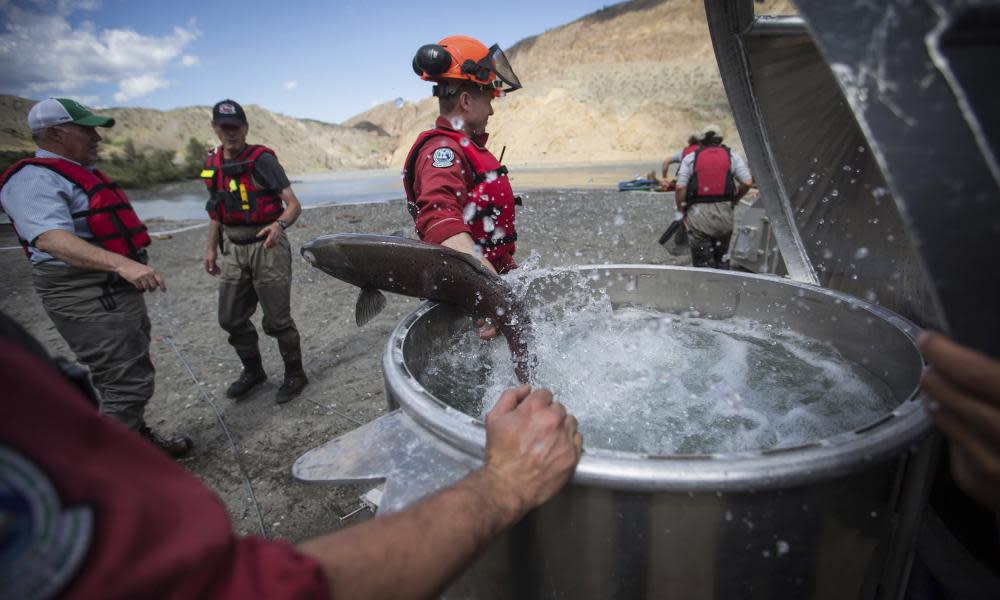Canada: workers race to free millions of salmon trapped after huge landslide

Helicopters, heavy machinery and nearly 200 workers are frantically working to free millions of salmon trapped by a landslide in western Canada.
Government crews in the area have worked relentlessly along the banks of the Fraser River to clear debris after a rockslide, discovered in a late June, created an impassable 5m-high waterfall.
Related: 'We're sounding the alarm': half of Canada's chinook salmon endangered
Each year, several species of Pacific salmon – sockeye, chinook, pink and coho – travel up British Columbia’s Fraser River to reproduce. But the newly formed barrier has blocked the fish from accessing critical watersheds for egg laying.
Weeks of excavation have shown success: already, 12,000 salmon have passed through carefully constructed channels. And 44,000 salmon – as many as 3,000 per day – have been transported by helicopter.
“Nothing is off the table unless it’s determined as not being feasible. We are looking at any and all options,” Michael Crowe of the Department of Fisheries and Oceans, told reporters on Wednesday. The team hopes to continue moving fish by truck, after the road was rebuilt, as well as developing a fish ladder.
Emergency crews have leaned heavily on local Indigenous communities, and their knowledge of salmon spawning, to help gather tens of thousands of fish.
“First Nations’ technical knowledge in fish capture – from beach-seining crews to a second fish wheel – underpins the operation,” said the government in a media release.
Related: What is the 'salmon cannon' and how do the fish feel about it?
Muddy, fast-moving water has made it difficult for officials to estimate the number of salmon trapped below the landslide site. In previous years, said Crowe, millions of salmon would be passing through this section of the Fraser River. A number of fish have been outfitted with radio tracking collars in order to give a clearer picture of how many have successfully moved upstream.
The landslide, and the frantic effort to clear it, highlights the barriers – natural and human-made – that salmon face each year.
In much of western North America, hydroelectric dams have blocked critical spawning routes. In recent years, the plight of displaced salmon has prompted increasingly dramatic attempts to move the fish, including the “salmon cannon” – footage of which recently went viral.
The efforts in British Columbia to free the trapped salmon comes amid a difficult times for the fish: recent data suggests sockeye salmon have plummeted 75% over the last century in Canada. Last week, the department of fisheries and oceans confirmed the dire state of sockeye when it warned only 600,000 were expected to spawn this year, as apposed to the normal return of five million. Chinook salmon, which are also stranded in the river, are also endangered.

